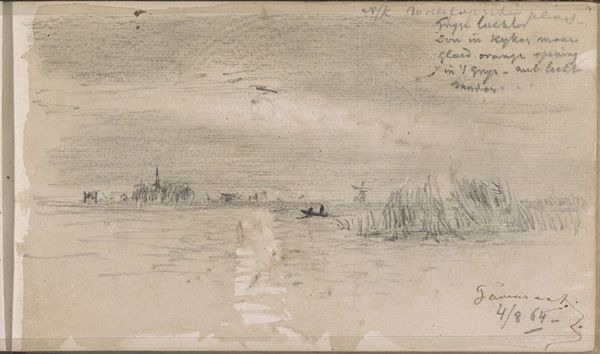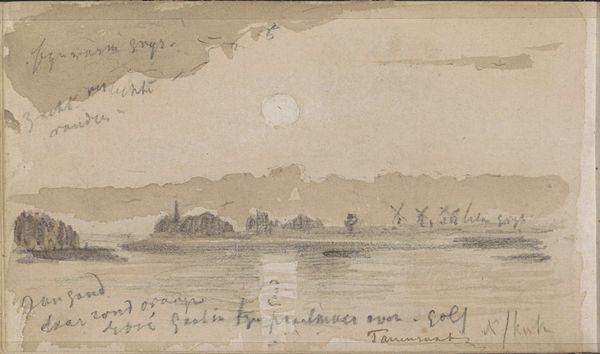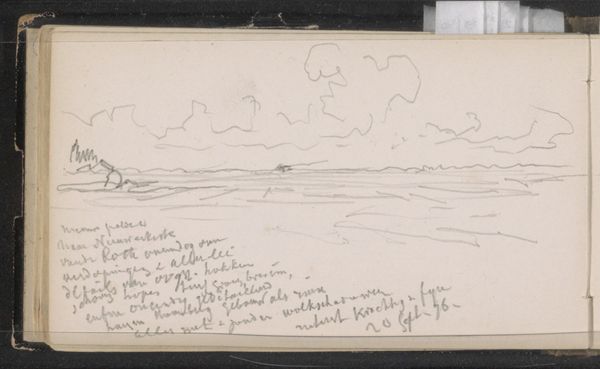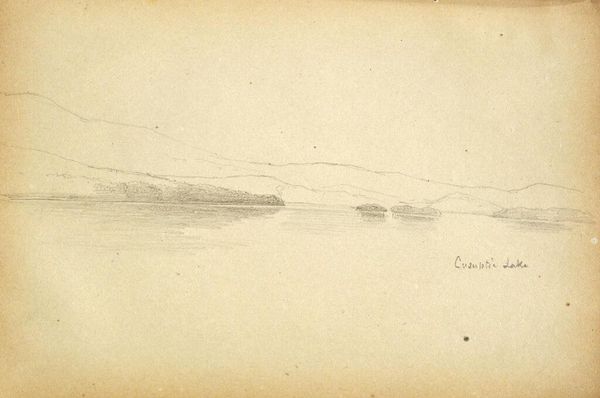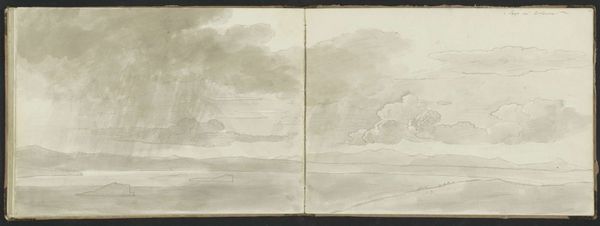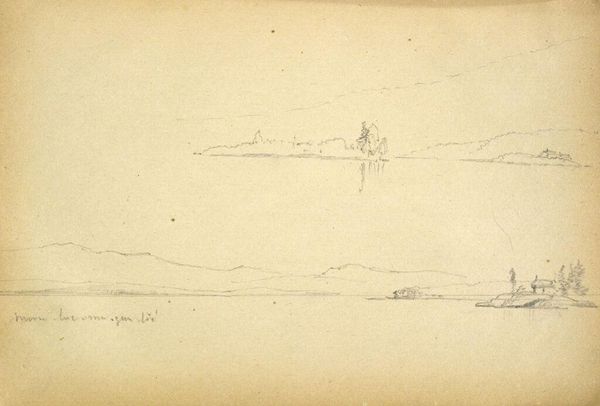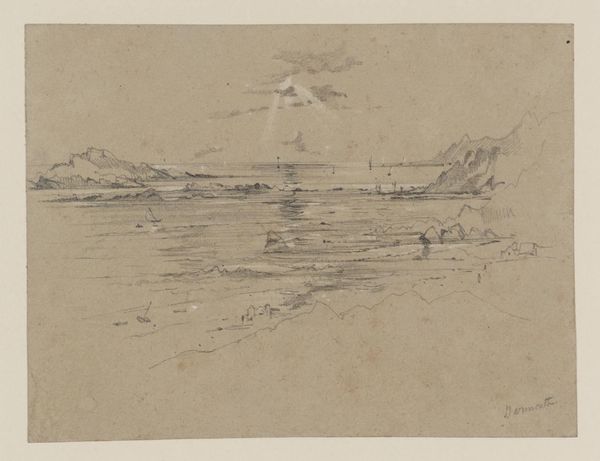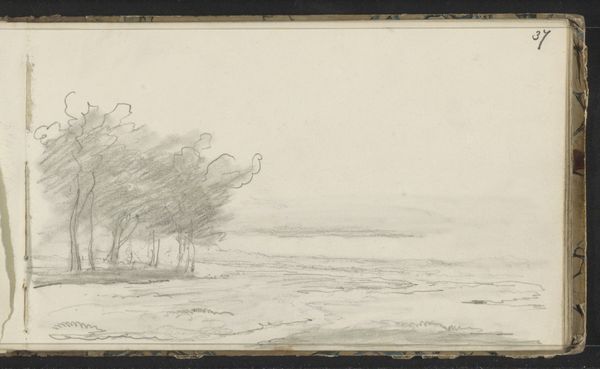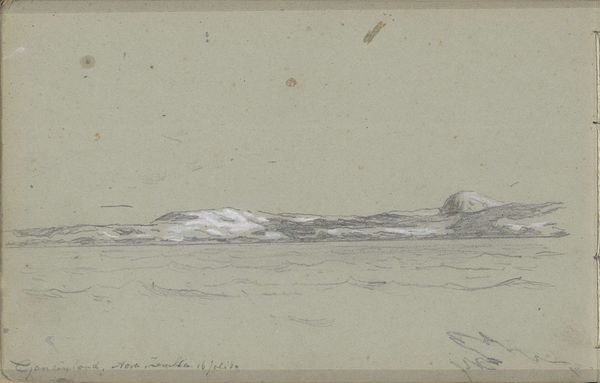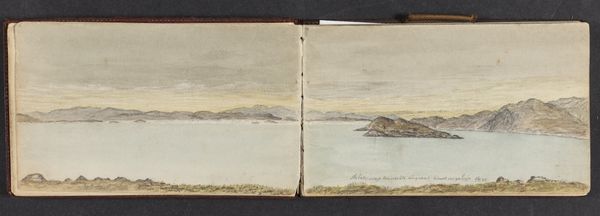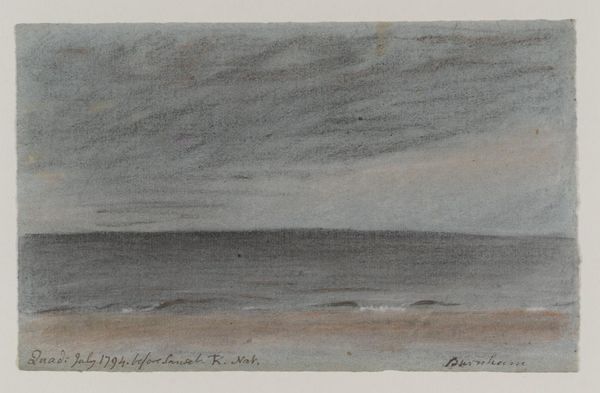
drawing, paper, watercolor, ink
#
drawing
#
impressionism
#
landscape
#
paper
#
watercolor
#
ink
Copyright: Rijks Museum: Open Domain
Editor: So, this is Johannes Tavenraat’s “Duck Hunt on the Wollefopse Plas near Rotterdam,” created sometime between 1864 and 1868. It’s a drawing in ink and watercolor on paper and something about the muted tones makes me feel the stillness of the water... What really catches your eye when you look at this piece? Curator: Oh, Tavenraat! I find myself drawn into the misty atmosphere he conjures with such a delicate touch. It reminds me of half-remembered dreams and the feeling of a cold, damp morning breaking across the flatlands. You know, there’s almost something spiritual about these open vistas. Does the placement of the ducks strike you? Editor: A little bit! The composition, especially the flock of birds in the distance, feels intentional. Do you think it has symbolic significance? Curator: Possibly! Those birds might represent a fleeting moment, the soul’s desire for freedom or a more simple existence in contrast with encroaching industry of the Rotterdam harbor visible at the horizon. Or perhaps he simply enjoyed watching birds, sketching as one might keep a visual diary? He offers us a vignette and invites us to imagine our own stories within the frame. What are you imagining as you consider those little specks? Editor: I like your "visual diary" idea! The quick strokes capture an everyday moment, and they avoid being overly precious or sentimental. Curator: Exactly. It's a celebration of seeing, feeling, being, even. These small observations become, collectively, our world. Do we dare claim it's optimism or only the document of the eye of the hunt? Editor: Interesting. I had only thought about how calm this drawing felt. Now I'm considering deeper, conflicting layers. Curator: Isn't that wonderful? It reveals something different each time, based on your current landscape and associations. It makes art feel very, very alive.
Comments
No comments
Be the first to comment and join the conversation on the ultimate creative platform.

